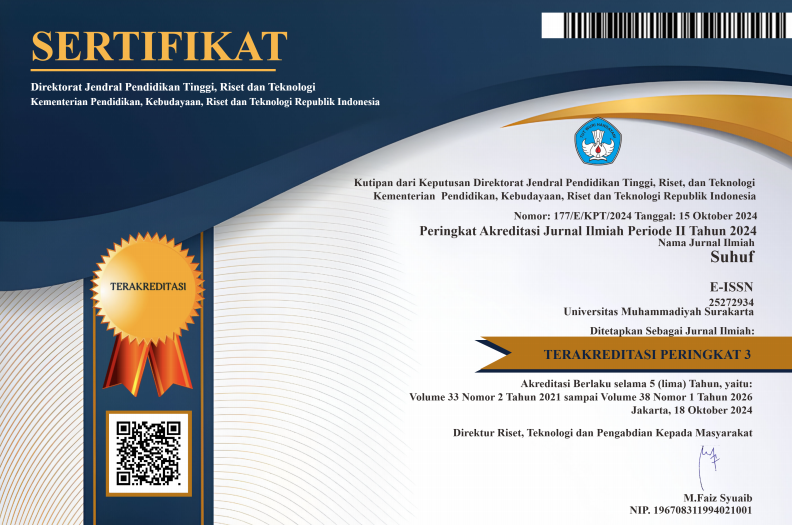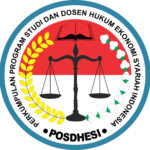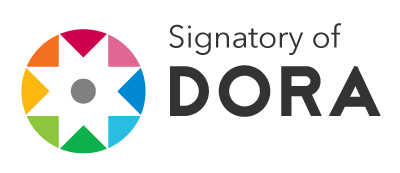What Matters More: Religious Values or Academic Excellence?A Conjoint Analysis of Parental Priorities in Islamic Education
DOI:
https://doi.org/10.23917/suhuf.v37i1.10576Keywords:
Conjoint analysis, Integrated Islamic education, Islamic values , Teacher quality, Parents' preferencesAbstract
This study investigates parental preferences in selecting integrated Islamic educational institutions in Mataram, West Nusa Tenggara, particularly among career-oriented parents who face challenges in directly supervising their children’s education. The research aims to identify the most dominant attribute influencing parental preferences and to evaluate the extent to which these attributes contribute to the decision-making process. A quantitative method was employed using conjoint analysis. Data were collected from 100 mothers of kindergarten-aged children residing in Mataram, selected through quota sampling. A questionnaire was used for data collection, and the analysis was conducted using conjoint analysis with a multiple linear regression approach via SPSS. The results indicate that among six evaluated attributes; school quality, teacher quality, school image, service quality, location, and cost only teacher quality and school location significantly influence parental preferences. Among these, teacher quality emerged as the most dominant factor. Collectively, the six attributes accounted for 76.8% of the variance in parental preference, while the remaining 23.2% was influenced by factors outside the research model. These findings underscore the importance of teacher competence and accessibility in shaping school choice decisions, offering valuable insights for educational institutions aiming to attract and retain students through improved staffing and strategic location planning.
Downloads
References
[1] M. Nursyamsyi and R. Puspita, “Tren Sekolah Islam Terpadu di Mataram Berkembang Pesat,” Republik, 2017. [Online]. Available: https://news.republika.co.id/berita/otsa0q428
[2] Y. Nurdiyanti, M. Yamin, and I. Mustafa, “The curriculum basis of Islamic education perspective Ali Ahmad Madzkur,” Nazhruna J. Pendidik. Islam, vol. 5, no. 2, pp. 555–571, 2022, doi: https://doi.org/10.31538/nzh.v5i2.2001.
[3] S. Agustin and M. Zalnur, “Integrated islamic schools as an alternative to prestigious schools of choice for parents in building children’s character,” Pionir J. Pendidik., vol. 13, no. 2, pp. 117–125, 2024, doi: http://dx.doi.org/10.22373/pjp.v13i2.24884.
[4] T. Masriah and W. Ajizah, “Islamic Education Curriculum Development,” Amandemen J. Learn. Teach. Educ. Stud., vol. 1, no. 1, pp. 15–21, 2023, doi: https://doi.org/10.61166/amd.v1i1.3.
[5] M. Murdianto, “Revitalisasi madrasah: strategi meningkatkan daya saing lembaga pendidikan islam di lombok [Revitalization of Madrasahs: A Strategy to Enhance the Competitiveness of Islamic Educational Institutions in Lombok],” J. Innov. Res. Knowl., vol. 1, no. 10, p. (in Indonesia), 2022, [Online]. Available: https://www.bajangjournal.com/index.php/JIRK/article/view/8833/6908
[6] M. R. Nugroho and M. Kristiawan, “Integrated Islamic Elementary School Characteristics as Encouragement for Parents in Choosing Education for Children,” in International Conference on Educational Sciences and Teacher Profession (ICETeP 2020), Atlantis Press, 2021, pp. 311–316. doi: https://doi.org/10.2991/assehr.k.210227.053.
[7] F. Isroani and M. Huda, “Strengthening Character Education Through Holistic Learning Values,” Quality, vol. 10, no. 2, pp. 289–306, 2022, doi: https://doi.org/10.21043/quality.v10i2.17054.
[8] P. E. Davis-Kean, “The influence of parent education and family income on child achievement: the indirect role of parental expectations and the home environment.,” J. Fam. Psychol., vol. 19, no. 2, p. 294, 2005, doi: https://doi.org/10.1037/0893-3200.19.2.294.
[9] N. Asiah and A. Isnaeni, “Inklinasi Masyarakat Muslim Kelas Menengah Terhadap Sekolah Dasar Islam Terpadu di Bandar Lampung [The Inclination of Middle-Class Muslim Society Toward Integrated Islamic Elementary Schools in Bandar Lampung],” Al-Tadzkiyyah J. Pendidik. Islam, vol. 9, no. 2, pp. 291–309, (in Indonesia), 2018, doi: https://doi.org/10.24042/atjpi.v9i2.3452.
[10] G. Hornby and R. Lafaele, “Barriers to parental involvement in education: An explanatory model,” Educ. Rev., vol. 63, no. 1, pp. 37–52, 2011, doi: https://doi.org/10.1080/00131911.2010.488049.
[11] F. F. Puspitasari, A. Sulaiman, and S. Supriyanto, “The integrated Islamic school’s characteristics and strategies for human resource supervision,” Nidhomul Haq J. Manaj. Pendidik. Islam, vol. 5, no. 3, pp. 304–320, 2020, doi: https://doi.org/10.31538/ndh.v5i3.821.
[12] A. Putri, “Understanding Child Sexual Abuse in the Religious Contexts in Indonesia through a Lived Experience,” Salasika, vol. 5, no. 1, pp. 11–20, 2022, doi: https://doi.org/10.1080/00131911.2010.488049.
[13] H. F. Aziz, F. D. A. Akbar, I. Jennyka, A. Yasmin, and A. M. N. Meidy, “Sexually Harassment in Boarding Schools and Universities: A Study of the Relationship Between Perpetrators and Victims,” At-Tuhfah J. Stud. Keislam., vol. 12, no. 2, pp. 27–44, 2023, doi: https://doi.org/10.32665/attuhfah.v12i2.1645.
[14] F. Zuhri, M. Amin, and M. Maspan, “Parents’ Motivation in Entering Their Children to Islamic Boarding School,” J. At-Tarbiyat J. Pendidik. Islam, vol. 5, no. 1, pp. 71–88, 2022, doi: https://doi.org/10.37758/jat.v5i1.388.
[15] N. Hasan, “Islamic education and modernity in Indonesia: Negotiating tradition and progress,” Indones. Malay World, vol. 48, no. 140, pp. 23–40, 2020, doi: https://doi.org/10.1080/13639811.2020.1234567.
[16] R. Rony, “Urgensi Manajemen Budaya Organisasi Sekolah Terhadap Pembentukan Karakter Peserta Didik [The Urgency of School Organizational Culture Management Against Character Building Students],” Tafkir Interdiscip. J. Islam. Educ., vol. 2, no. 1, pp. 98–121, (in Indonesia), 2021, doi: https://doi.org/10.31538/tijie.v2i1.26.
[17] S. W. Lee, “Pulling back the curtain: Revealing the cumulative importance of high-performing, highly qualified teachers on students’ educational outcome,” Educ. Eval. Policy Anal., vol. 40, no. 3, pp. 359–381, 2018, doi: https://doi.org/10.3102/0162373718769379.
[18] R. Dahlia, Z. Khairi, A. Diniaty, K. Anwar, A. A. Tohar, and V. Shofiah, “PERAN CITRA SEKOLAH DALAM MEMOTIVASI ORANG TUA MEMASUKKAN ANAKNYA KE SEKOLAH DASAR ISLAM TERPADU (SDIT),” J. Ilmu Psikol. dan Kesehat., vol. 2, no. 1, pp. 135–144, 2023, doi: https://doi.org/10.47353/sikontan.v2i1.1270.
[19] A. F. Nasution, A. P. Julia, and R. F. Zulna, “The Influence of Learning Facility Quality on Student Learning Motivation at Campus II UIN Sumatera Utara Medan: Pengaruh Kualitas Sarana Belajar Terhadap Motivasi Belajar Mahasiswa Di Kampus II UIN Sumatera Utara Medan,” Zeniusi J., vol. 1, no. 2, pp. 26–35, 2024, doi: https://doi.org/10.70821/zj.v1i2.25.
[20] F. Fajardo-Magraner, J. Salom-Carrasco, and M. D. Pitarch-Garrido, “Space-time models and personal accessibility to educational facilities. case study of space-time accessibility to schools in the city of Valencia,” Appl. Spat. Anal. policy, vol. 16, no. 4, pp. 1395–1415, 2023, doi: https://doi.org/10.1007/s12061-023-09510-5.
[21] L. P. Malau, Y. R. Edward, S. Faris, and M. R. Sianipar, “The Effect of Education Costs, Promotions, And Facilities on Students’ Decisions to Choose to Learn at the Faculty of Medicine, Prima Indonesia University through Attitude as a Moderating Variable,” Int. J. Res. Rev., vol. 9, no. 8, pp. 641–649, 2022, doi: https://doi.org/10.52403/ijrr.20220850.
[22] D. A. Harahap, D. Amanah, M. Gunarto, and P. Purwanto, “The Decision of Choosing A University: The Impact of Education Costs,” JIM UPB (Jurnal Ilm. Manaj. Univ. Puter. Batam), vol. 9, no. 2, pp. 123–127, 2021, doi: https://doi.org/10.33884/jimupb.v9i2.3712.
[23] M. Kamase, “The Effect of Education Costs Through Accreditation of Students’ Decisions to Choose Private Universities in Makassar City,” Int. J. Multicult. Multireligious Underst., vol. 7, no. 8, p. 517, 2020, doi: http://dx.doi.org/10.18415/ijmmu.v7i8.1961.
[24] M. A. Lubis, “Effective implementation of the integrated Islamic education,” Glob. J. Al-Thaqafah, vol. 5, no. 1, pp. 59–68, 2015, doi: https://doi.org/10.7187/gjat792015.05.01.
[25] J. W. Creswell and C. N. Poth, Qualitative inquiry and research design: Choosing among five approaches. Los Angels: Sage publications, 2016. [Online]. Available: https://books.google.co.id/books?id=DLbBDQAAQBAJ&dq=Creswell,+J.+W.+(2015).+Qualitative+Inquiry+and+Research+Design:+Choosing+Among+Five+Approaches.+Sage+Publications.&lr=&source=gbs_navlinks_s
[26] S. Ahmed, M. A. Baloch, and H. Karim, “Influence of teacher factors on ‘Quality Education’ in government primary schools in the Naseerabad Division, Balochistan, Pakistan,” Ann. Hum. Soc. Sci., vol. 4, no. 2, pp. 626–637, 2023, doi: https://doi.org/10.15408/SDI.V19I1.370.
[27] F. H. R. Piske et al., “The Importance of Teacher Training for Development of Gifted Students’ Creativity: Contributions of Vygotsky.,” Online Submiss., vol. 8, no. 1, pp. 131–141, 2017, doi: https://doi.org/10.4236/CE.2017.81011.
[28] M. Fauyan, P. Y. Fauziah, L. Wibawa, and N. Bin Mamat, “The Factors Affecting Parent’s Preference When Selecting Islamic Schools,” MUDARRISA J. Kaji. Pendidik. Islam, vol. 16, no. 1, pp. 25–48, 2024, doi: https://doi.org/10.18326/mudarrisa.v16i1.634.
[29] V. Altınok, “The Effect of Supervision in Education on Teacher Quality and Performance,” Int. J. Psychol. Educ. Stud., vol. 11, no. 3, pp. 230–246, 2024, doi: https://doi.org/10.52380/ijpes.2024.11.3.1317.
[30] Z. Zuhaeriah, M. Ali, and Y. Yusra, “The role of islamic education teachers competency in improving the quality of education,” Int. J. Contemp. Islam. Educ., vol. 2, no. 1, pp. 108–130, 2020, doi: https://doi.org/10.24239/ijcied.vol2.iss1.15.
[31] S. Alimudin, H. Hashim, M. A. Marzukhi, and Y. A. Abdullah, “School Location and Factors Affecting Parents Mode Choice to School,” Environ. Proc. J., vol. 5, no. SI3, pp. 357–362, 2020, doi: https://doi.org/10.21834/ebpj.v5isi3.2579.
[32] M. N. Khasbulloh, “Preferensi Masyarakat dalam Pemilihan Lembaga Pendidikan Islam: Studi Pada SD NU Insan Cendekia Kediri [Community Preferences in Choosing Islamic Educational Institutions: A Study at NU Insan Cendekia Elementary School, Kediri],” JoIEM (Journal Islam. Educ. Manag., vol. 1, no. 2, pp. 51–66, (in Indonesia), 2020, doi: https://doi.org/10.30762/joiem.v1i2.2299.
[33] K. Thoyyibah and D. R. Adhimah, “Analisis Faktor Pertimbangan Orang Tua Dalam Memilihkan Sekolah [An Analysis of Parents’ Consideration Factors in Choosing Schools,” in Prosiding Seminar Nasional Unimus, 2022, p. (in Indonesia). [Online]. Available: https://prosiding.unimus.ac.id/index.php/semnas/article/view/1234
[34] N. A. Prastika, H. Zhafirah, A. R. Sari, and A. P. Astuti, “Pengaruh sarana prasarana, biaya, dan lokasi sekolah dalam menentukan pilihan rasional orang tua memilihkan sekolah untuk anak [The Influence of Facilities, Costs, and School Location on Parents’ Rational Decision in Choosing a School for Their Children],” in Prosiding Seminar Nasional Unimus, 2022, p. (in Indonesia). [Online]. Available: https://prosiding.unimus.ac.id/index.php/semnas/article/view/1239
[35] M. Rizki and S. Hadi, “Parents’ Considerations Factors in Choosing Elementary School,” J. K6 Educ. Manag., vol. 2, no. 4, pp. 312–322, 2019, doi: https://doi.org/10.11594/jk6em.02.04.06.
[36] M. A. Rusadi and A. M. Fauzi, “Rasionalitas orang tua dalam memilih sekolah anak di Sekolah Dasar Islam Terpadu (SDIT),” Al-Qalam J. Kaji. Islam dan Pendidik., vol. 14, no. 1, pp. 40–45, 2022, doi: https://doi.org/10.47435/al-qalam.v14i1.711.
[37] M. W. Shohib, M. Z. Azani, N. L. Inayati, D. Dartim, and A. Nubail, “Islamic Perspective on Organizational Citizenship Behavior Among Academic Staff in Indonesian State Islamic Higher Education: Is It Effective?,” Suhuf Int. J. Islam. Stud., vol. 36, no. 2, pp. 155–169, 2024, doi: https://doi.org/10.23917/suhuf.v36i2.4702.
[38] A. N. Izi, F. N. Anggraini, R. Regita, and R. Rabiatuladawiyah, “A Development of the Turnitin System in Improving Plagiarism Detection for Islamic Religious Education Studies,” Suhuf Int. J. Islam. Stud., vol. 36, no. 2, pp. 216–226, Nov. 2024, doi: https://doi.org/10.23917/suhuf.v36i2.6275.
[39] R. Rifah, M. Jailani, and M. Huda, “Artificial Intelligence (AI): An Opportunity and Challenge for Achieving Success in Islamic Education in the Era of Digital Transformation,” Suhuf Int. J. Islam. Stud., vol. 36, no. 2 SE-Articles, Nov. 2024, doi: https://doi.org/10.23917/suhuf.v36i2.6273.

Downloads
Submitted
Accepted
Published
How to Cite
Issue
Section
License
Copyright (c) 2025 Anjani Wira Murti, P Purwanto, Awan Kostrad Diharto, Deddy Ramdhani, Muhammad Badat Alauddin

This work is licensed under a Creative Commons Attribution 4.0 International License.


















